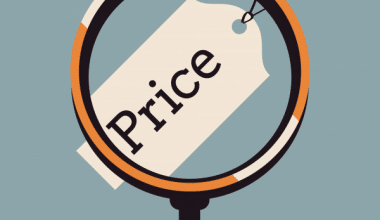A Customer satisfaction survey is the most common type of market research that a business can carry out. It also entails formally contacting customers, getting their opinions, and acting on the feedback. Businesses can carry out an evaluation of project performance using the findings of a satisfaction survey. A happy workforce is essential to a successful business. You need to gauge and comprehend employee satisfaction levels to learn how they feel about their work. Additionally, employee satisfaction surveys are the most effective method for achieving this. The patient satisfaction survey questionnaire helps to establish the foundational patient care metrics and offers perceptions into the institutions’ level of care and, if any, service issues.
Therefore, this manual covers everything you need to know to get started and maximize your ROI, including the advantages of measuring customer satisfaction.
Satisfaction Survey
A questionnaire designed to help businesses understand how their customers feel about their products and services, brand, and customer service is known as a customer satisfaction survey. Customer satisfaction surveys further enable businesses to strategically improve their products, boost customer retention, enhance the user experience, delight customers, and provide exactly what the market wants. Hence, you must ask for feedback and pay attention to your clients if you want to reduce negative client experiences and increase client retention.
This is why it is so important to create pertinent and useful survey questions. The right questions can help you uncover valuable information that will enable you to improve your product offerings, fully comprehend your target audience, and provide exceptional customer service. Customer satisfaction surveys also help you understand what customers want and help you identify areas of your business where it can improve.
Customers Satisfaction Survey
The purpose of CSAT surveys is to gauge and quantify the degree of customer satisfaction with a particular company, item, service, or interaction. Customers are prompted to rate their level of satisfaction on a scale or offer comments regarding their interaction. In addition, you can gather insightful data from these surveys to help you hone your tactics, enhance customer service, and forge closer bonds with your clients.
By skipping a customer satisfaction survey, businesses run the risk of maintaining practices that have an impact on retention. The best way to inform decisions is to collect feedback from customers or clients. Then, you can learn a lot about the preferences of your customers by surveying them and getting their feedback. The necessary adjustments can then be made to raise sales and increase customer satisfaction.
It is crucial to pick the appropriate delivery and collection method when designing your customer satisfaction survey. Decide first which platform you will employ for collecting responses. At the end of your survey, include one or two open-ended questions to give your respondents a chance to express themselves and make sure you have not missed any issues. Making a customer satisfaction survey requires more than just asking the right questions. Be aware of innate biases, survey timing, and other crucial variables that may affect responses.
Types of Customer Satisfaction Surveys
#1. NPS (Net Promoter Score) surveys
The Net Promoter Score only poses one straightforward query to the client: “How likely are you to recommend our product and services to a friend or colleague?” Organizations record responses On a scale of 0 to 10.
NPS aids in determining the likelihood of repeat business and long-term customer loyalty. And because of its widespread use, conducting internal and competitive benchmarks is simple.
#2. Customer Efforts Score (CES) Surveys
Although with your support services, the customer effort score also gauges customer satisfaction. It also aids the company in determining how straightforward or challenging it was for them to address customer service issues.
#3. Customer Satisfaction Score (CSAT) Surveys
It is critical to gauge customer satisfaction with your goods and services using the CSAT score. Thus, it is a transactional metric that you can use to determine how pleased your customers are with a specific interaction. Customers can also choose from options like emojis, rating scales, Likert scales, or numbered scales to rate their experiences.
#4. Milestone Surveys
Milestone surveys are strategically timed questionnaires used to gather more detailed information about the user experience at key points in the customer journey. These questionnaires may be time-based (sent 60 days after sign-up, for example) or experience-based (sent following successful completion of the onboarding process).
Businesses can better understand the customer journey and implement informed improvements by strategically gathering feedback at these crucial times.
Benefits of Customer Satisfaction Survey
#1. Finding Room for Improvement
CSAT surveys help you identify problem areas and make the necessary adjustments by highlighting specific areas where your company may be lacking. You can easily recognize and fix these issues, whether they relate to the quality of the overall experience, a defect in your product, or a shortcoming in your service.
#2. Disclosing Customer Feelings
Discovering your customers’ feelings, preferences, and pain points is made possible by CSAT surveys, which open up a direct line of communication with them. You can also learn a lot about what makes your customers tick and what needs to be improved by collecting quantitative and qualitative feedback.
#3. Building Client Loyalty and Support
Customers who are happy with your product or service are more likely to recommend it to others and spread the word about it, which increases customer retention. CSAT surveys assist you in identifying these clients and cultivating those connections so that they become brand advocates who spread the word about your company.
#4. Enhancing Competitive Advantage
Customer satisfaction helps you stand out in the crowd in today’s cutthroat market. You can maintain your competitive edge by enhancing your offerings in terms of both goods and services as well as the overall customer experience. By routinely tracking customer satisfaction, you can compare your efforts to those of your rivals and pinpoint the areas in which you excel or fall behind.
#5. Boosting Business Expansion
A successful business depends on satisfied customers. Studies have shown that companies with higher levels of customer satisfaction typically see higher revenue growth.
CSAT surveys also give you the knowledge you need to make informed decisions, organize your investments wisely, and allocate your resources efficiently, all of which will boost your company’s performance.
#6. Addressing Customers’ Needs Directly
You can reach out to your target market directly and learn about their needs and wants by conducting customer satisfaction surveys. These surveys give you the ability to pinpoint the elements that are most important to your clients, giving you a clear understanding of what they expect from you. Armed with this information, you can align your objectives and tactics to fulfill and even surpass these demands, thereby gaining the trust and loyalty of your clients.
#7. Using Feedback Insights to Advance
It enables you to make the necessary improvements, capitalize on your strengths, and turn any weaknesses into growth opportunities. By proactively responding to customer complaints, you can keep bad publicity from tarnishing your brand name while using good publicity to convert happy customers into brand evangelists.
#8. Improving Customer Retention Rates
When consumers have many ways to quickly switch to a competitor, keeping them as customers is crucial today. You demonstrate your commitment to comprehending your customers’ needs by routinely conducting customer satisfaction surveys.
They consequently feel valued and appreciated, which increases the likelihood that they will continue to support your brand.
By consistently working to improve your products, services, and overall customer experience based on survey feedback, you can raise customer retention rates and forge lasting relationships.
Employees Satisfaction Survey
Organizations use employee satisfaction surveys as a tool to gauge how happy their staff members are. Then, the information is analyzed and used to guide improvement efforts in areas that received unfavorable survey feedback. You should regularly conduct employee satisfaction surveys to track the success of your efforts to raise satisfaction and look for emerging trends. When organizing your employee survey, be careful. Getting sincere, genuine responses will help you turn them into workable business solutions. When planning, developing, and implementing your surveys, keep that objective in mind.
Best Practices for Survey Question Writing
- Write straightforward, simple questions: leave out any pointless details
- Ask questions that can spur change rather than ones that will prevent you from acting on the results.
- Make your inquiries clear and precise: Avoid generalizations
- Avoid using jargon and industry buzzwords.
- Maintain objectivity by avoiding biased or leading questions.
- Make sure there is a sufficient, balanced range of answers: always provide one impartial response
- Avoid using emotive language instead keep your tone even and neutral.
- Asking multiple questions at once should be avoided.
- Avoid asking the same question twice because doing so could make respondents survey fatigued
- Make all inquiries optional; do not demand an answer to each one.
- Before distributing your survey, test it out: send it to your coworkers for review, then make changes in response to their comments.
Benefits of an Employee Satisfaction Survey
#1. Recognize and Raise Productivity Levels
Employee productivity is extremely low when they are unhappy with their job responsibilities or assignments.
Therefore, by asking the appropriate questions in a staff satisfaction survey, you can determine whether or not employees are happy with their jobs and what steps can be taken to raise employee satisfaction levels. For that employee, it will further contribute to higher levels of job satisfaction and productivity.
#2. Retain your Staff
Finding new employees to replace departing ones is more difficult than finding new employees to retain current ones.
Organizations invest more money in recruiting new employees than in keeping existing ones. Consequently, by including the appropriate questions in your survey, you can identify and keep in-demand workers.
#3. Employee Opinions Will Be Honest and Unbiased
Your employee can freely discuss your business by using a workforce satisfaction survey. So, even though what they have to say might be difficult to take, getting honest employee feedback is to your advantage.
This employee survey will inform you of how your staff feels and may also generate fresh suggestions for enhancing your company. Put your ego aside and exhort your team to be brutally honest.
#4. Providing Real-Time Insights
In essence, surveys of employee satisfaction reveal the current feelings of employees, not the feelings that management believes they have. The executive team can then receive the findings from HR and act quickly on them by making decisions and designing interventions that will produce positive outcomes.
#5. Increasing Productivity
Employee engagement and productivity increase when they feel like a part of the business. They want the business to be successful.
Patients Satisfaction Survey
A questionnaire designed to gauge how satisfied patients are with the level of care and quality provided by the healthcare provider is known as a patient satisfaction survey. Therefore, the patient satisfaction survey questionnaire assists in establishing fundamental patient care metrics that help medical institutions understand the standard of care offered and service pitfalls. A patient satisfaction study may be carried out at any time while an electronic medical record (EMR) or electronic health record (EHR) is being created. It can also be completed using any device, including mobile, paper surveys, websites, POS terminals, computers in waiting areas, and other formats.
The most trustworthy and beneficial patient feedback is obtained when it is gathered following the appropriate events, such as post-consultation, post-treatment, and post-discharge. Such patient feedback can provide insight into the most crucial elements of your healthcare services.
Types of Patient Satisfaction Surveys
#1. Patient Satisfaction Survey Regarding Treatment/Care
A survey of patients’ experiences with care and treatment is conducted to determine how satisfied they are with their care. The majority of the survey questions for patients are organized around topics like doctors’ expertise, the efficacy of treatment, accurate diagnosis, accessibility to care, etc. The objective is to better patient satisfaction by learning from patients what they like and dislike. Thus, the ideal timing for sending it via email or SMS would be near the end of the treatment program.
#2. Inpatient Feedback Survey
One of the most important health survey questions related to inpatients can be used to gauge how satisfied they are with both their treatment and their stay in the hospital while receiving it. When receiving inpatient care, factors like the cleanliness of the rooms, the technology used, the frequency of doctor visits, on-site amenities like pharmacies and labs, the quality of the meals, etc. can affect the patient experience.
#3. Outpatient Feedback Survey
Patient satisfaction surveys can be also used to gather opinions from people who only visited hospitals or other healthcare facilities for consultation or treatment. This indicates that the survey’s focus is on responses from patients who were only brief visitors to the facility and were not admitted.
Outpatient feedback can cover a range of healthcare topics, including the staff’s friendliness, the time spent waiting before an appointment, the simplicity of scheduling one, the doctor’s expertise, the accessibility of pharmacies and lab test services, etc.
Benefits of Patients Satisfaction Survey
#1. Increased Efficiency
Lastly, patient satisfaction polls can aid in performance enhancement. You can change things that will have a positive effect on your patients’ experiences by using the survey results to pinpoint areas that need improvement. This may result in your patients being more content and devoted to you.
#2. Higher Productivity
Your company’s staff and provider productivity can rise as a result of spending money on training and software to enhance the patient experience. Additionally, when you have fewer late cancellations and no-shows, you have less dead time in your schedule, which allows you to maximize patient time and associated billing.
#3. Increased Employee Morale
Employee happiness need not suffer in the process of developing a patient-focused culture. Involving and inspiring your staff is an important step in providing top-notch patient care.
Healthcare facilities are frequently high-stress settings. Your staff will work harder and feel more valued if you invest in training and giving them the tools they need to do their jobs well. This will also help you retain more employees.
#4. Patient Loyalty and Retention
Patients who are happy with you will promote you well. They share both positive and negative interactions with their friends and family when talking to them.
How to Improve Patients Satisfaction Survey
- Reduce waiting times
- Offer a range of accessible communication channels
- Make the scheduling procedure more efficient
- Impart knowledge to patients
- Go digital
- Offer patient-centered care.
- Track satisfaction
Project Satisfaction Survey
Employers use a questionnaire known as a project satisfaction survey to gather comments on project progress. Use this free project satisfaction survey to gather opinions from your team and clients if you work in management, construction, or another industry.
Simply alter the questions to reflect your work, add the form to your website, or share a link to it, and you can begin gathering responses right away. It also helps you quickly gather the feedback you need and is perfect for remote teams. an evaluation form that employers use to get input on project progress.
A satisfaction survey is a tool that will help in gathering feedback on customer satisfaction to assess project or program success and to gather lessons learned that can be used in future meetings and interviews. Project quality management is a technique used in project management to guarantee that the goals, objectives, and tasks of the project satisfy all relevant stakeholders.
To produce high-quality goods and services, project managers thus apply the idea of customer satisfaction. Project satisfaction surveys are a useful tool for obtaining feedback. Therefore, create surveys with a purpose in mind and thoughtfully construct questions that help you gather pertinent data to get meaningful feedback.
The best way to ensure that a customer remembers your satisfaction survey is to send it as soon as you can after an experience. A project satisfaction survey sent soon after a customer interacts with a support representative is more likely to produce accurate results because the customer will still remember what happened and how they felt about the experience.
What Are the 4 Types of Customer Satisfaction Surveys?
- Net Promoter Score (NPS)
- Customer Satisfaction Score (CSAT)
- Customer Effort Score (CES)
- Product-Market Fit
What Are the Main Survey Techniques?
The ten most popular survey techniques are online surveys, in-person interviews, focus groups, panel sampling, telephone surveys, post-call surveys, mail-in surveys, pop-up surveys, mobile surveys, and kiosk surveys.
What Types of Questions Can You Use in a Survey Questionnaire?
- Open-ended questions.
- Closed-ended questions.
- Rating questions.
- Likert scale questions.
- Multiple choice questions.
- Picture choice questions.
- Demographic questions
How Many Questions Should a Survey Have?
Participants might not begin or finish your survey if it is too lengthy. If it is too brief, your team will pass up chances to learn more about your customer base. Consumers are willing to respond to 7–15 survey questions, with 10–14 minutes being the ideal survey length. Additionally, this study demonstrates that if a survey seems to be taking too much time for them to complete, they are more likely to give up on it.
How to Write a Survey Report?
- Employ data visualization
- Write the most important details first.
- Create a concise survey summary.
- Describe the purpose of your survey.
- Contextualize survey statistics
- Inform the reader of the intended result.
Conclusion
With the help of this effective tool, you can assess the overall success of your goods and services, measure customer satisfaction, pinpoint areas for improvement, and identify problem areas. By paying attention to the opinions and sentiments of your customers, you can learn more about what truly delights them and what may be falling short. Organizations can gain a lot from conducting employee satisfaction surveys, including the ability to improve their employer brand and pinpoint problem areas.
One of the best ways to raise customer satisfaction is to solicit feedback from customers. This is because you can determine what patients want without having to make assumptions. Patient surveys give you a glimpse into how people feel about their time at your facility, which can help you take quick action and keep clients. Patient-based surveys collect thorough feedback that can help a practice get better. Positive patient feedback is significant, but it is also important to give negative patient feedback priority.
Related Articles
- CUSTOMER FEEDBACK: The Only Guide You Will Ever Need
- EMPLOYEE ENGAGEMENT SURVEY: Best Providers, Questions & Answers
- CUSTOMER SATISFACTION: Ways to Boost Customer Satisfaction






